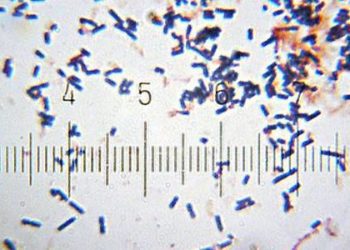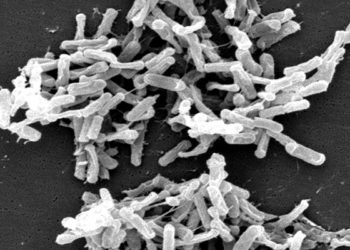Half of C. difficile cases genetically distinct from previous cases
Image: PD
1. The majority of Clostridium difficile infections were transmitted from sources other than symptomatic patients.
2. Genetically distinct isolates of Clostridium difficile suggest diverse sources of infection.
Evidence Rating Level: 2 (Good)
Study Rundown: Current measures in preventing Clostridium difficile infections are based on the thought that most infections are transmitted by symptomatic patients in hospital settings. However, recent research found that transmission through hospital contact contributes to less than 25% of cases. This study analyzed data from 4 hospitals to examine the possible sources of C. difficile infections. Their findings indicate that contrary to traditional concepts, most infections may be acquired from sources other than symptomatic hospital patients. These findings suggest that hospital measures will need to take into consideration additional sources of infection when designing methods of infection control. This study is limited in that the data is collected from hospitals in non-outbreak settings. Bacterial strains of outbreaks may have greater propensity for spread. In addition, the decreased transmission from symptomatic patients found may be due to the established infection control measures. Additional studies are needed to determine the unexplained sources of infection.
Click to read the study, published today in NEJM
Click to read an accompanying editorial in NEJM
Relevant Reading: Use of multilocus variable number of tandem repeats analysis genotyping to determine the role of asymptomatic carriers in Clostridium difficile transmission
In-Depth: Over a 3.6 year period, isolates were collected from patients in four Oxford University Hospitals. Of 1250 C. difficile samples collected, 1223 were successfully sequenced. 35% of cases were found to be genetically related (<2 SNVs from any previous cases) to at least one previous case. Of these cases, 13% involved ward contact and 19% involved some sort of hospital contact. 45% of all cases were genetically diverse enough (>10 SNVs from any previous cases) to represent transmission from sources other than symptomatic patients.
By Xu Gao and Adrienne Cheung
© 2013 2minutemedicine.com. All rights reserved. No works may be reproduced without expressed written consent from 2minutemedicine.com. Disclaimer: We present factual information directly from peer reviewed medical journals. No post should be construed as medical advice and is not intended as such by the authors, editors, staff or by 2minutemedicine.com. PLEASE SEE A HEALTHCARE PROVIDER IN YOUR AREA IF YOU SEEK MEDICAL ADVICE OF ANY SORT.



![[Physician Comment] The extent of C. difficile infections may not differ in light of immune status](https://www.2minutemedicine.com/wp-content/uploads/2012/11/x800px-Clostridium_difficile_01-e1353335581537.jpg.pagespeed.ic_.We5DxZl6Ye-350x250.jpg)


